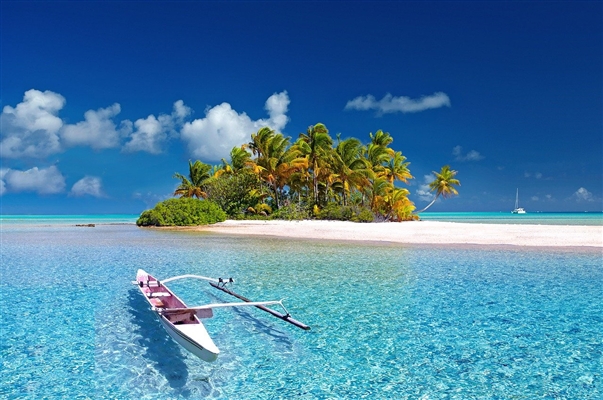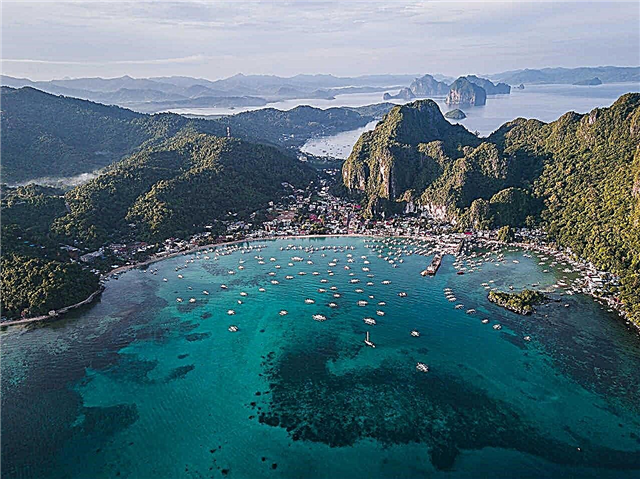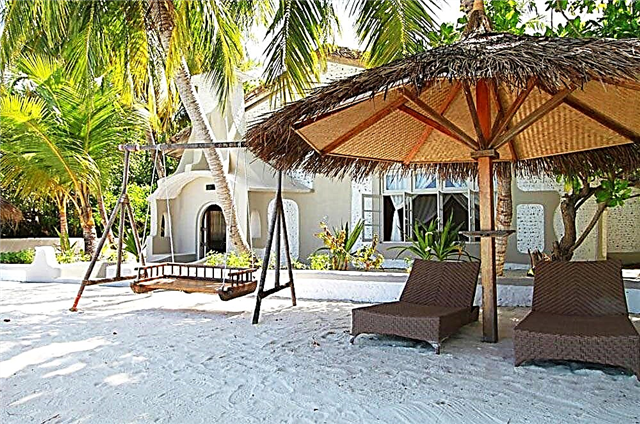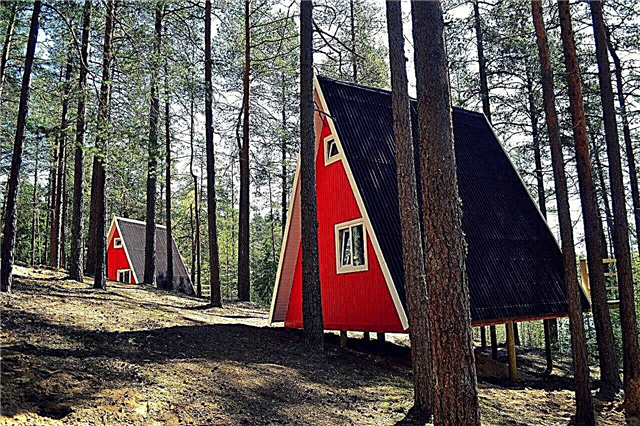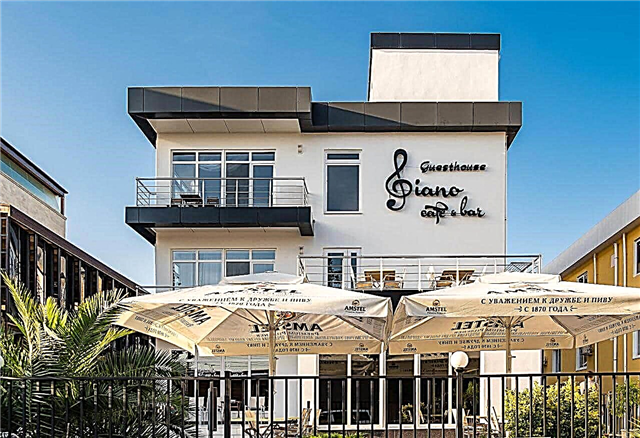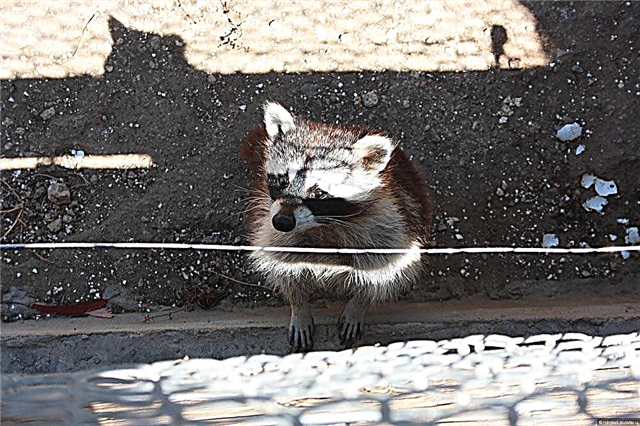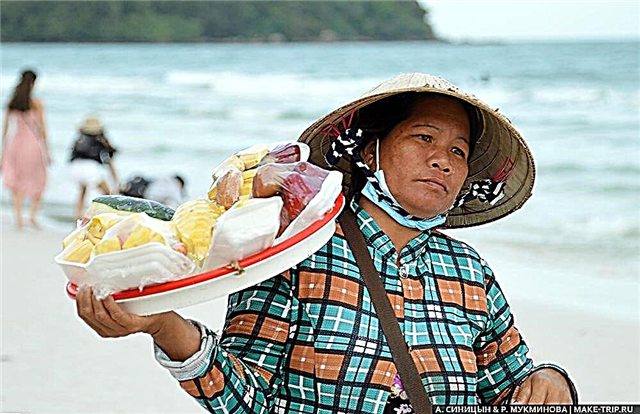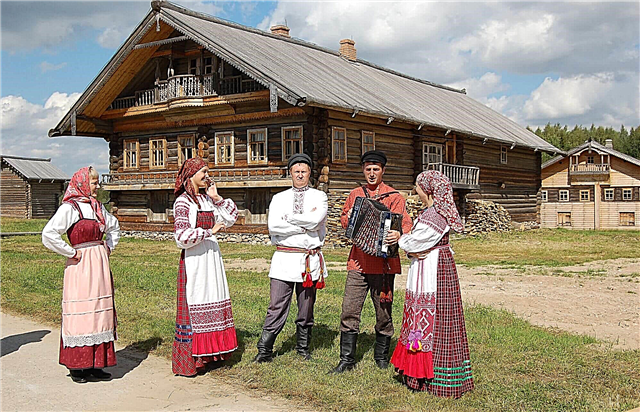The amazing northern city is famous for its culture, traditions and artisans. The most popular tourist routes include visiting the monuments of wooden architecture - old noble and merchant mansions. In the center of the city there is a museum, decorated with the same "carved palisade" from the song of the "Pesnyary" group. The Lace Museum is dedicated to the art of lace making.
The very first place where tourists aspire to get in Vologda is the 16th century Kremlin. On its territory, ancient buildings have been preserved, there are exhibition museum halls. Particularly interesting are the buildings of the Bishops' Court, the architectural complex of which is called the "small Kremlin". Also on the territory of the Vologda Kremlin is the oldest stone building in the city - the Sophia Church, built in 1568.
The most interesting and beautiful places
List, photos with names and descriptions of the best sights of Vologda. He will help you plan routes and choose excursions to explore the top places of the city and its environs in 2-3 days.
Vologda Kremlin
Stone fortification, founded in the 16th century. The ensemble of the Vologda Kremlin is made in the North Russian style. The excursion program of visiting the Kremlin includes visiting architectural monuments of the XVI-XVII centuries and exhibition museum halls. The buildings of the Bishops' or Consistorsky court are the best preserved. The St. Sophia Cathedral of 1568, the famous bell tower with an observation deck, also looks good.

We recommend: 35 best recreation centers in the Vologda region.
Kremlin square
Located next to the Bishop's courtyard. The architectural ensemble of the square has been forming for several centuries - buildings of different eras and styles are located on it. Its wooden pavement was replaced with a stone one in 1947. At the beginning of the XXI century, the pedestrian square underwent a large-scale reconstruction - they laid tiles instead of a lawn, updated the appearance of old buildings, installed benches and lanterns.

Don't Miss: 30 Top Attractions in the Vologda Oblast.
Vologda river
The river divides the city into two parts. Barges and motor ships do not go along the shallow river, but you can ride a scooter or boat. A walk along one of the comfortable embankments will give you a lot of vivid emotions. There are three embankments in Vologda - the Kremlin and Prechistenskaya on the right bank and the embankment of the 6th army on the left. They are equipped with promenade zones, art objects and unusual monuments.

Revolution square
The central square of the city, where the iconic sights of the city are concentrated. In the Komsomolsky park, which is part of the square, there is a memorial complex with the Eternal Flame. In 1977, the Monument to the Heroes of the Civil War was erected. The houses on the square have a long history. The building of the music school previously housed the City Duma, and within the walls of the Philharmonic - the Noble Assembly.

Monument to the 800th anniversary of Vologda
Located in a picturesque place on the banks of the river next to the Vologda Kremlin. The monument offers an excellent view of the river bends, parks and temples. A monument was erected in 1959 on the site of the Church of the Resurrection of Christ. The bas-reliefs of the high obelisk tell about the main milestones in the 800-year history of Vologda. The obelisk is faced with gray granite, the edges of its base are decorated with arched niches, kokoshniks.

Lace Museum
Vologda has long been famous for its lacemakers. This craft originated in the 19th century and is still of interest. The museum dedicated to Vologda lace is located on the Kremlin square in the city center. This is the former building of the State Bank, a monument of culture and architecture. More than 500 exhibits tell about the history of lace-making in Vologda, the development of the craft, there is a workshop.

Center for crafts and crafts "Carved Palisade"
Dedicated to the art of needlework. The center helps the city's craftsmen to realize their creative potential. They hold exhibitions with unique works of craftsmen, give lectures, arrange thematic evenings. For guests, there are master classes in modeling, painting clay toys, sewing dolls from scraps, weaving birch bark and carving patterns on wood. The museum is located in a house with a carved front garden near the Church of Varlaam Khutynsky.

Botanical garden "Botanica"
The garden is 2200 m². It opened in 2016, but has already collected an impressive collection of various types of plants. Among 800 specimens of plants, there are exotic and listed in the Red Book. They are collected from all over the world - Australia, Africa, America, Asia, Europe. Separate from the greenhouses, there is a garden with bright tropical butterflies, where chameleons, spiders, reptiles, rabbits, birds, iguanas, ferrets live.

House-Museum of Peter I
The one-storey stone house is an architectural monument of the 17th century. A small two-room house belonged to Mrs. Goutman. In the period from 1692 to 1724, Emperor Peter I visited Vologda 5 times and each of his visits stayed in this house. The museum has been located within its walls since 1885. Its exposition numbers about 500 antiques. The pride of the collection is the mirror of Peter I, his clothes and a death mask.

Museum "Vologda Link"
Located on Ulyanova Street, in a wooden building where Stalin was exiled in the 1920s. In the late 19th and early 20th centuries, about 10,000 people were sent into exile in Vologda. The museum's expositions are dedicated to the life of political exiles in Vologda. Exhibited are things from the life of the exiles, including prison documents and documents belonging to gendarmes. The setting of Stalin's confinement room has been recreated. The main exhibit of the room is the wax figure of Stalin.

Ensemble of the Stone Bridge
The pedestrian bridge is thrown over the Zolotukha River. Built according to the project of Bortnikov in 1789-1791. Two towers have survived, which are part of the bridge ensemble, to which a shopping arcade is attached. Instead of two dismantled towers, the Passage and Hermitage hotels were built on the south side. In 1936, Kamenny Most became the first paved street in the city. It is now a favorite spot for street musicians and artists.

Spaso-Prilutsky monastery
One of the oldest monasteries in the entire Russian North. It was founded in 1371 by Saint Dmitry Prilutsky, a disciple of Sergius of Radonezh. Located in the Priluki microdistrict in the bend of the Vologda River. The monastery, revered by pilgrims, was able to preserve the practical original architectural ensemble. Tourists are attracted here by the opportunity to touch the old Russian culture. Excursions are organized around the monastery.

Attractions of the Vologda Kremlin
On the territory of the historic Kremlin and next to it, as expected, there are the most visited tourist sites. Vologda is no exception in this sense. If you are short on time, go to the Kremlin.
Bishop's court
The buildings of the residence of the Vologda archbishops and bishops were erected in different periods - from the 17th to the 19th centuries. This is one of the best-preserved ensembles of medieval homesteads of spiritual rulers. The most valuable building is the Economic Building of 1659. In total, there are 7 buildings and the Resurrection Cathedral on the territory of the "small Kremlin". They have well-preserved historic interiors.

Sophia Cathedral
Orthodox stone church of the era of Ivan the Terrible and built on his orders. It is an important religious and tourist destination. Travelers are interested in both the external appearance of the cathedral and its internal interior. About 5000 m² of walls are covered with unique 17th century frescoes. They depict biblical scenes and scenes from the lives of the saints. The most ambitious is the scene of the Last Judgment, located on the western wall.

Alexander Nevsky Church
The operating temple of the 18th century is a regional cultural monument. The brick church is crowned with a typical Vologda spire; there is a high bell tower. It is under the tutelage of the local Cossacks and has a military status. Inside there are memorial plates with the names of the residents of Vologda who died in military conflicts. The temple is engaged in helping orphanages, there is a Sunday school and a theater studio for young people.

Resurrection Cathedral
It was erected at the end of the 18th century on the site of one of the Kremlin towers from the stone of this tower. The two-storey five-domed cathedral in the Baroque style is decorated with columns in the Italian style, the entrance is made in the Empire style. The interior of the cathedral, which has survived to this day, was almost completely completed in the 19th century. An art gallery is located within the walls of the cathedral. It contains a unique icon of the 14th century. The inscriptions on it are made in the ancient Permian alphabet.

Bell tower of the Vologda Kremlin
The hipped eight-sided bell tower was erected in the middle of the 17th century in the traditional classical style. In the middle of the 19th century, it was rebuilt at the direction of Bishop Pallady, making it higher than the rest of the bell towers in the city. An excellent view of the city opens from its observation deck. The project for the superstructure of the bell tower was directed by the architect Schildknecht. The dome crowning the bell tower is gilded. The bell tower chimes are considered the main clock in Vologda.

Vologda wooden architecture
The wooden architecture of Vologda is its trademark. There are more than a hundred old wooden mansions and houses, which are architectural monuments.
House of Puzan-Puzyrevsky
An old wooden mansion was built in 1823 on Yekaterino-Dvoryanskaya Street, which is now called Herzen Street. The noble mansion with a mezzanine and a mezzanine was given the status of an architectural monument. For a long time, the American embassy was located within its walls, then a museum. An urban legend says that the house is inhabited by the ghost of its first owner with a funny surname, who evicts negligent owners.

House of the Zasetskikh
The one-storey mansion was built in the 1790s. The house with a mezzanine and a portico is considered the oldest surviving wooden building in the city. The federal architectural monument is located on Leningradskaya Street practically in the center of the city. The building, with its vibrant green walls, is an excellent example of a classic noble mansion. Inside, the original doors and tiled stoves have been preserved.

House of the merchant Samarin
Located on Sovetskaya Street in the historical part of the city. The two-story large building belonged to the merchant Samarin. He built it in 1910. Samarin's family lived in it, and some of the rooms were rented out. In 1913-1914, Maria Ulyanova lived in one of these rooms, later they opened the Ulyanova Museum, renamed the Museum of Merchant Life. The merchant's mansion looks austere and unadorned.

Levashov's house
The noble estate of the early 19th century is a majestic building with a gable roof, a large triangular pediment and an eight-column portico. The coat of arms of the Levashov family was depicted in the center of the pediment, but it was dismantled under Soviet rule. The wooden house was built in the Empire style with unusual shapes of windows and openings, original decor. The house is located on Herzen Street in the historic center.

Volkov's house
The masterpiece of Vologda wooden architecture is located on Leningradskaya Street. The one-story building has a particularly brightly decorated facade - the main entrance is made in the Empire style, with pediments and a portico. The roof supports on the porch are decorated with carved designs. The interior of the interior has been preserved since the 19th century. For a long time, the building housed an art gallery, now a music school is located within its walls.

Churches and temples of Vologda
The city is adorned with ancient temples and churches. Some require restoration and repair, but this does not make them any less attractive.
Temple of Constantine and Helena
Built in the classic 17th century Orthodoxy style. The temple was erected in 1690, this is the last surviving example of a church in Vologda with the appearance of a "Russian pattern". A three-tiered hipped-roof bell tower adjoins the temple from the northwest. In the upper church there is a five-tiered iconostasis, it is believed that it was made at the same time as the construction of the church. At the entrance there is an icon of St. Zosima and Savvaty of 1709.

Church of Varlaam Khutynsky
Orthodox Church, founded in 1780. Funds for the construction were donated by the merchant Uzdennikov. It is believed that a master from St. Petersburg became the architect of the building in the early classicism style. The decoration of the church is more inherent in a secular building than a religious one. On the east side it is decorated with vases with stucco molding, and on the west side there is a bell tower with a high spire. The church is named after the abbot of the Novgorod monastery.

Church of the Intercession on Kozlen
Located in the historical area of the city of Nizhniy Posad. The church was built in 1704-1710. The church has one head and a high bell tower. In Soviet times, a furniture factory was located within its walls, then a military registration and enlistment office. In the 1990s, after reconstruction, the temple was returned to the believers. Despite the difficult life of the church, unique frescoes of the early 18th century, made by Yaroslavl masters, have been preserved in it.

Church of St. Nicholas the Wonderworker in Vladychnaya Sloboda
The stone temple was built in 1669. It is located in one of the districts of the District. This territory previously belonged to the lord of the Bishops' court. Against the background of other churches of the same period, the Church of St. Nicholas the Wonderworker stands out for its large size. In shape, it resembles a tall cube topped with five heads. The main relic of the church is the relics of the Bishop of Vologda St. John, transferred here from the St. Sophia Cathedral.

Church of Dimitry Prilutsky on Navoloka
The Orthodox church was built in 1651. According to legend, for the first time a wooden church in this place was built in the XIV century by the owner of the house, in memory of the fact that Dimitry Prilutsky stayed with him for the night. Now the stone church is part of the Spaso-Prilutsky monastery. The internal interiors have preserved the frescoes of 1721. They are executed in the Baroque style and depict scenes from the Old and New Testaments, as well as scenes from the life of Prilutsky.

Church of John the Baptist in Roshchenye
For the first time, a church on this site appeared in 1618. Then it was called Alekseevskaya. The laying of a stone church on the site of the burned down Alekseevskaya church took place in 1710. In 1930, the Bolsheviks set up an anti-religious museum within the walls of the Orthodox church. On the inner walls, you can see fragments of the painting from 1717, restored in the 19th century. The church is located in the children's park near the Drama Theater.

Interesting museums in Vologda
The most popular museums that you should definitely visit.
Museum "World of Forgotten Things"
Opened in 1991 in the former house of the merchant Panteleev in the middle of the 19th century. The house in the style of late classicism is perfect for hosting collections dedicated to the life and culture of the townspeople in the pre-revolutionary era. The interiors of the 19th century have been restored on the first floor of the house. The furnishings of the dining room, nursery, study and living room have been recreated. On the second floor, a collection of Vologda portraits of the 18th-19th centuries is displayed.

Museum “Literature. Art. Century XX "
Dedicated to the work of the composer Gavrilov and the poet Rubtsov. Opened in 2005. Located on Herzen Street in the mansion of the merchant Sitnikov, built in 1868. The excursion program is designed for visitors of different ages - from primary school students to adults. Special interactive programs have been developed for children. Among the permanent exhibits are personal belongings of Gavrilov and Rubtsov, photographs, documents.

Gallery "Red Bridge"
Located near the famous Vologda pedestrian bridge. The gallery's expositions occupy 800 m² on two floors of the building and an attic. The paintings of artists of different styles and trends are exhibited - avant-garde, symbolism, realism, works in the traditional style.A special place is given to the works of young artists, giving them the opportunity for creative realization. In total, there are about 1000 works of art in the gallery's funds.

House-Museum of A.F. Mozhaisky
The house of the famous design engineer is located in a picturesque place - on the banks of a small reservoir in the midst of trees. Alexander Fedorovich lived and worked there from 1861 to 1868. The house recreates the atmosphere of the 19th century, in which the aircraft designer created his scientific projects. The exhibition dedicated to his life and work occupies 5 halls. The atmosphere is emphasized by things belonging to the Mozhaiskys - furniture, a piano, drawings.

Museum of Pharmacy of the Vologda Region
Located in a unique building. It is believed that the first pharmacy in Vologda was opened in this building, which became the third in Russia. It happened in 1675 and to this day the premises of the house on Lenin Street are occupied by a pharmacy. The museum contains a lot of exhibits from the history of pharmacy - mortars, vessels, old photographs and recipes, regulatory pharmaceutical documents from different times. There is a unique pill making machine.

Shalamovsky house
Located on Lenin Street. It is an architectural monument of the 18th century, in the southern part of which, since 1991, there has been a museum dedicated to the life and work of Shalamov. The writer was born in this house and lived there until 1924. In another part of the house there is a gallery of the Vologda region, exhibiting paintings. The central exhibit of the gallery is a portrait of Shalimov, painted during his lifetime.

Interesting monuments of Vologda
The most famous historical and modern monuments and monuments that adorn the streets and squares of the city.
Monument to the letter "O"
The popular art object is located opposite the Shalimovs' house in a historical park. The installation of the sculpture in 2015 is dedicated to the 865th anniversary of Vologda. The letter "O" is considered the favorite letter of the Vologda residents, which clearly stands out in their dialect. The height of the metal letter "O" is 2.5 meters. It is installed on a pedestal. The monument was made in a beautiful patterned style, reminiscent of the famous carved wooden patterns.

Monument to K. N. Batyushkov
The monument to the Russian poet was installed in 1987 on the Kremlin square. The grand opening of the monument is dedicated to the 200th anniversary of the poet. The author of the project is the sculptor V. Klykov. For this work, he received an award to them. Repin, and the monument itself was given the status of a cultural heritage site of the region. The sculptural composition includes several figures - Batyushkov himself, his Muse in the form of a young girl and a horse with his head down.

Monument to the first electric lantern
Opened in 2004. Despite its relative youth, it is one of the most popular monuments in the city. This year marks the 100th anniversary of the city's electrification. The monument looks like the very first electric lantern installed in the city, and it is installed in the same place. The originality of the monument is added by the dog depicted next to it, peeing on the pole. The author of the project is the architect E. Nikitina.

Art object "Door to ..."
A metal door is located on the city embankment. Several Vologda blacksmiths and a welder worked on the original look of the monument. The work was carried out within the framework of the festival of folk crafts. The craftsmen worked on the art object of scales in 120 kg for 5 days. The door is decorated with beautiful details in the form of the sun, goldfish, the Vologda Kremlin. The base of the monument is made in the form of a map of Vologda.

Bench "Let's sit and have a drink"
An unusual wrought-iron bench was installed on the embankment in 2015. Blacksmiths presented it to the City Day after the festival of folk crafts. As conceived by the authors, the bench is a symbol of Vologda residents' hospitality. The bench is "two-sided" - two rows of seats are shared by a common backrest. Sitting on it, you can admire the beautiful views of the flowing river or the alley of the Kremlin square.

Memorial "Eternal Flame"
Located in the Komsomolsky park - a cozy green area within the city. The memorial was opened in 1975. The fire was brought from Moscow, from the Tomb of the Unknown Soldier. The bowl of the Eternal Flame is set in the center of a large five-pointed star. A tiled path has been laid to the memorial. The pedestal is faced with red granite. The park around is decorated with flower beds and beautiful bushes. Memorial words are carved on the stele of the memorial.

Gardens and parks of Vologda
The most popular parks of the city, where locals and visiting guests always rest, are Peace Park, the Kremlin Garden. It's nice to walk along the boulevard on Pobedy Avenue.
Peace park
A large park with an area of 155 hectares. The natural area is one of the most favorite walking areas among the townspeople. The park was founded in 1939. Since then, new seedlings have been regularly planted in it - ate, spirea, honeysuckle, acacia. Among the trees, there are children's and sports grounds, there is a beach area, and attractions are installed. Through the entire park, a central alley is laid, from which narrow paths go into the depths.

Kremlin garden
The history of the garden begins in 1923. Then the botanical garden was laid on the territory of the former Bishops' garden. The only botanical garden in the north had an area of 4 hectares. In the 1920s, it was renamed the VPVRZ Culture and Recreation Park. The garden received its modern name in 2013. The decoration of the park is two ponds in which ducks and swans live. The ponds are connected by a small openwork bridge. Weeping willows grow along the banks of the ponds.

Boulevard on Victory Avenue
Victory Avenue connects three streets - Gostinodvorskaya, Gromovskaya and Konstantinovskaya. The boulevard for walking is laid along the part of the avenue where Gostinodvorskaya Street used to be. The boulevard was founded here in 1858 in honor of the arrival of Emperor Alexander II to Vologda. In the middle of the 20th century, blue spruces, birches, elms were planted on the boulevard. We installed benches with openwork patterns, laid out beautiful flower beds.

Attractions in the vicinity of Vologda
The most famous places where you can go for a weekend near the city are, perhaps, the village of Semenkovo and the Bryanchaninovs' estate.
Architectural and Ethnographic Museum "Semenkovo"
It is located 15 km from Vologda in the village of Semenkovo. Previously, it was the old village of Barskoye. The territory of the museum is 12.7 hectares. The basis of the museum is the monuments of wooden architecture of the XIX-XX centuries, collected from different districts of the region. A visit to the museum is a wonderful way to get acquainted with the culture, life and traditions of the inhabitants of the Russian North, learn about the way of life of the peasantry, the way of village life 200 years ago.

The Bryanchaninovs' estate
Family country estate of the 19th century, located in the village of Pokrovskoye, 30 km from the city. It was built in the late classicism style. It is a regional monument of architecture and landscape gardening. Dmitry Bryanchaninov was born in it and lived part of his life, canonized by the Orthodox Church. The estate includes the main house, an outbuilding, a necropolis, a church, a park with a pond, and a cellar.


